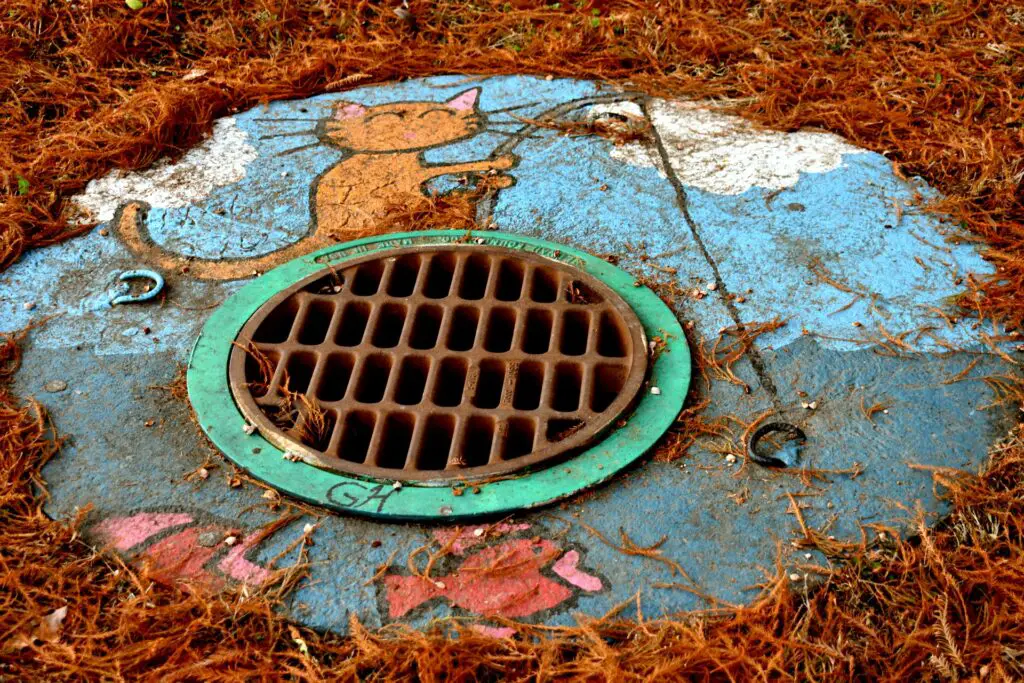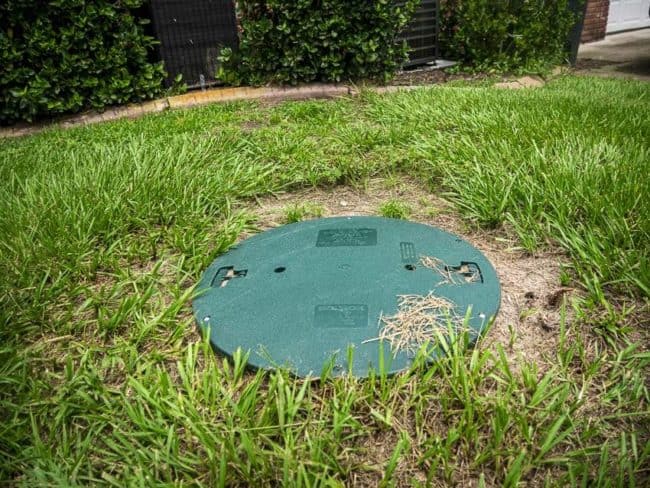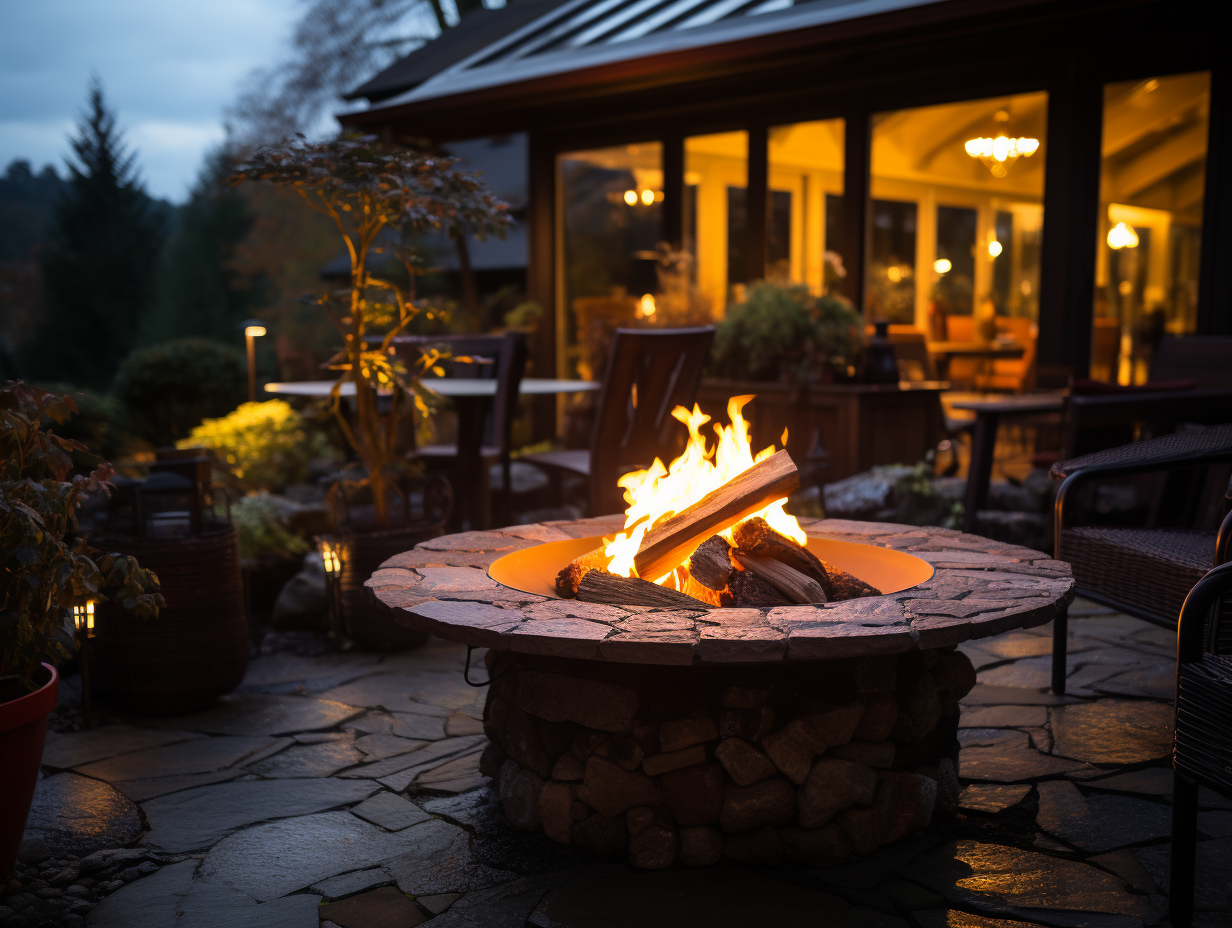
We get a lot of questions from homeowners about whether they can put a patio over their septic tank.
Building directly on top of an existing septic field is not recommended without consulting your local building department first.
While it is theoretically possible for this to work, there are no guarantees that just because you pour a new concrete slab over your septic system that everything will be fine.
Things can go wrong and often do when building on top of an existing septic system.
Septic systems rely on good drainage to work effectively. As such, it is never a good idea to build anything that could impede or restrict the free movement of water into and through your septic system.
Some soils will not allow for proper drainage and in these cases, installing a French drain around your septic field might be a better option if you don’t want to move it.
Can You Build A Patio Over A Septic Tank?

A common question homeowners ask when building a patio is, “can you build a patio over a septic field?”
The answer to this question is no. The reason for this is that the weight of the concrete in the foundation will cause too much pressure on your septic system and can lead to flooding or a damaged septic tank.
A septic tank or leach field’s weight tolerance is extremely low, and even a little bit of weight might cause it to break. It will also be important for you to have access to the tank in the future.
However, if you already have a patio and want to add onto it, there are ways to do this. One way is by using gravel instead of concrete.
The weight will be much less and you’ll still get the same look as other patios that use concrete or brick pavers. You can then fill in the gaps with sand for a smooth finish. Another option is to add a pier and beam foundation under your existing patio slab.
You should also consider contacting your local building department and seeing if there’s anything specific you need to know about laying down a patio on top of an existing septic system.
They will most likely have some advice regarding how best to go about installing such a feature without causing harm to either yourself or anyone else who uses these facilities located underneath the surface.
You’ll want things like slopes added where needed and these spaces should be inspected before doing anything else.
Can You Put Pavers Over A Septic Tank?
Pavers are not permitted on top of a septic tank, and doing so may be in violation of your state or local building codes.
Septic tanks can bear very little weight without being damaged, and you’ll also need access to the tank in the future.
A septic tank is not meant to bear weight and can be damaged if too much weight is put on it. Building a deck over the top of the septic tank may also present problems in the future as you will need access to check or maintain it.
A Septic System is a self-contained tank and a drain field system is designed to treat household sewage. It consists of one or more tanks, pipes, and absorption fields.
There are specific requirements for building codes regarding the installation and maintenance of septic systems.
If you live in an area that requires them, your local health department will inspect the installation before they will issue a permit for the home construction or renovation work that may affect the system’s operation.
Can You Build a Deck Over a Septic Field?
You should never build a deck over a septic field because it will prevent the effluent from naturally draining and dissipating.
This can damage the septic system as well as emit foul odors into the air around your deck. The evaporating effluent can also rot the deck from below.
Nobody wants to spend time on a deck that stinks like a sewer!
If you have a septic field on your property, try building the deck over an area of the yard that isn’t used for anything else.
If possible, build it far enough away from the septic system to avoid any damage or unpleasant smells.
Also, remember to leave plenty of room around your pipes and septic tank so workers can access them easily if maintenance is required in the future.
If you must build over the septic system, talk to the contractor who will be installing your deck. They may have ways to do so without disrupting the drainage of the field.
If they can’t avoid it, ask them how much damage is likely to occur and if there’s anything you can do now to prevent future damage.
Also, speak with a septic tank pumping company about ways to mitigate problems that could arise in the future. It’s better than having an expensive deck fall into disrepair because the ground beneath it has been compromised by effluent run-off!
Rules and Codes Regarding Septic Tanks
Before you begin construction on around or on top of your septic tank, you should check your local building codes for septic tanks. It is legal in some areas to construct a floating deck over a septic tank. In others, it is illegal and can result in fines and the removal of the deck.
In Ohio, for example, the septic tank, lines, and drain field must be at least 10 feet away from building slabs, roads, decks, and other structures. In Florida, that distance is reduced to 5 feet.
These rules apply not only to decks, but also to landscaping like walls and trees, foundations, slabs, and other types of construction. If these restrictions apply to you, avoid building near or over the tank, lines, or drainage field.
How Much Weight Can Go On Top of a Septic Tank?
When it comes to an old-fashioned steel septic tank, the answer is usually “very little.” Modern septic tanks are typically made of concrete and are therefore much more durable. Some models have a “traffic rating” and axle weights.
The majority of the advice, however, is to never park on or even drive across a septic tank. Collapse or partial collapse can cause serious accidents, resulting in serious injuries to the driver, the vehicle, the tank, and the property.
If you’ve bought a house with a tank, have it inspected to see what it’s made of and whether it’s in good condition. If you are installing a new one, make sure it is made of strong concrete and meets all of the specifications.
In addition to the septic tank, there are two other septic system components: the drain field and the drain lines (the pipes). The drain field (also known as a leach field) contains the drain lines that run from the tank, and you don’t want these to be damaged as well.
Ideally, the septic tank and its drainage system should be supported by nothing heavier than the earth it is buried beneath. Mark off that area so that no one attempts to park on it.
What Can You Put Over A Septic Tank?
The short answer is not much. Septic tanks are built to be water-tight to prevent leaks out of the tank and entry into the surrounding soil.
Here is a list of objects you can and can’t put over a septic tank:
| Object | Yes | No |
|---|---|---|
| Patio | No | |
| Deck | No | |
| Pavers | No | |
| Gravel | No | |
| Plants | Yes | |
| Tarp | Yes | |
| Trees | No | |
| Flowers | Yes | |
| Driveways | No | |
| Grass | Yes |

![What Gravel To Use For Patio Base [Best Options]](https://www.cleverpatio.com/wp-content/uploads/2021/11/What-Gravel-To-Use-For-Patio-Base-270x180.jpg)


Leave a Reply